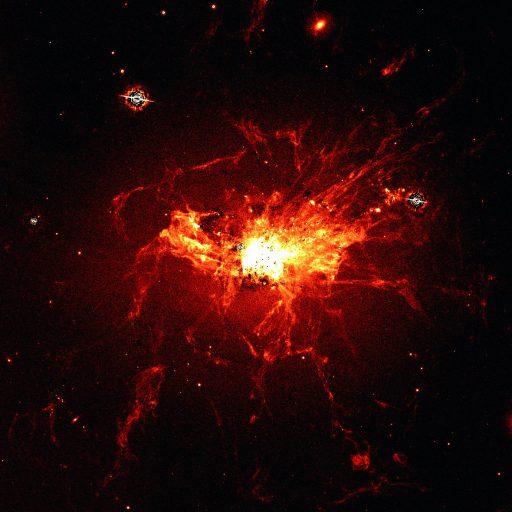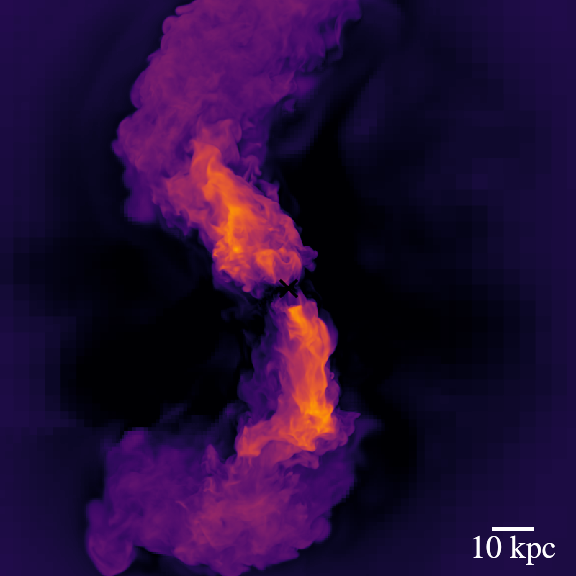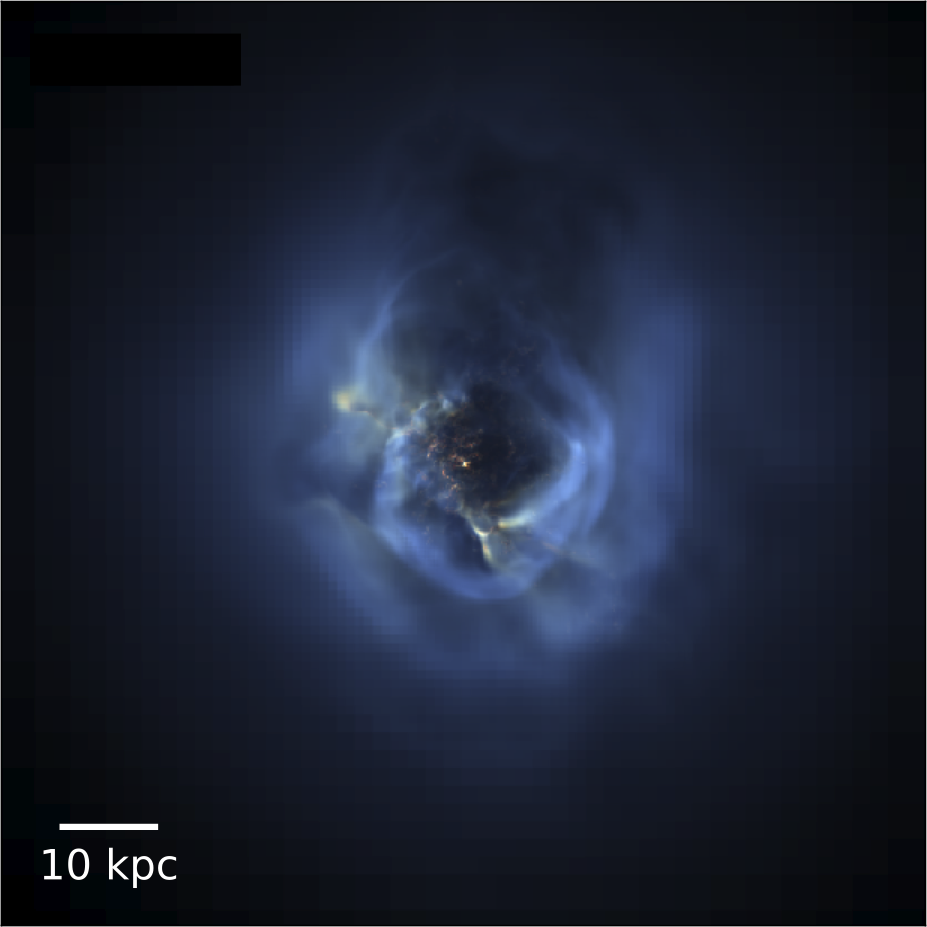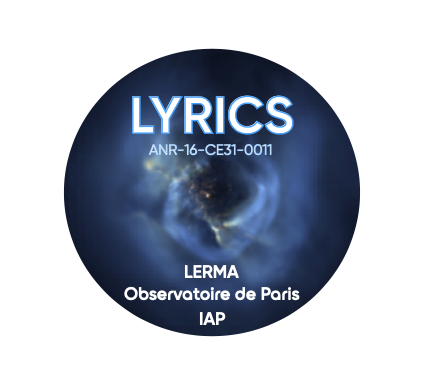We began by implementing several new features in the adaptive mesh refinement code RAMSES. These developments allow for a better modelling of the effect of the propagation of an AGN jet in the intra-cluster medium: (i) Diffusion of cosmic rays and their acceleration in shock discontinuities (Dubois et al., 2019), (ii) dust evolution, (iii) stabilisation of the central black hole in the cluster (essential for effectively regulating cooling), (iv) redistribution of high-resolution cells to more accurately track regions of interest such as filaments or the AGN jet, (v) addition of tracer particles attached to hot and cold gas, and (vi) the effects of thermal conduction saturation in weakly dense and magnetised media. The simulations ran on the national supercomputing centres provided by GENCI. The initial conditions of the simulation, based on observed density and temperature profiles in the Perseus cluster, were implemented. These initial conditions reproduced globally thermally stable conditions and allowed for the development of local thermal instabilities leading to filament formation. The execution and analysis of these simulations were completed and published to (i) study the cycles of cold gas formation in the centre of clusters (Beckmann et al., 2019), (ii) investigate the modification of the intra-cluster gas thermal stability by cosmic rays (Beckmann et al., 2022,a), and (iii) examine the effect of thermal conduction in conjunction with AGN activity on the stability of the cluster core (Beckmann et al., 2022,b).
Fed by cold gas cooling from the cosmic web, active galactic nuclei found in the brightest cluster galaxies drive powerful jets that inflate large X-ray cavities in the surrounding intra-cluster medium. The energy thus deposited is thought to balance the cooling of intracluster gas, and keep the cluster in gobal hydrostatic equilibrium. However, observations of nearby clusters, particularly Perseus, show an extended nebula of cold gas filaments in the centre that appear preferentially aligned with the jet bubbles. Recent work has suggested that these filaments are either formed by local thermal instabilities, due to the turbulence induced by AGN feedback, or uplifted behind the buoyantly rising AGN bubbles. However, many open questions remain as to their origin and properties.

Figure : An image of the Perseus cluster taken using the Hubble space telescope (Fabian 2008). The bright, extended filaments are clearly visible around the central galaxy.
To study the formation these filaments, we conduct simulations of isolated galaxy clusters. At the beginning of the simulation, the clusters consists of a hot gaseous halo with a black hole located at the center (marked on images shown here by a cross). As the gas starts cooling and falls onto the cluster center, some of it gets accreted by the black hole.
In response, the black hole drives fast, hot jets into the hot gas that inflate large bubble, which can be seen particularly well in mock x-ray observations, such as the image shown below. As well as the black hole and its feedback, we also model star formation and stellar feedback, which help to keep the cluster center hot.
Figure : An image showing the hot jets (yellow) extending to large scales from the cluster center
The huge bubbles blown by the black hole driven jets stir the gas and slow down cooling, before they dissipate into the hot gas. This process does not entirely prevent further dense gas from forming but does ensure that most of the cluster remains thermally stable.

The dense gas that does form from the remaining thermally unstable regions shows a wide range of shapes and sizes, as can be seen in the six snapshots of the simulation shown below. Some look very similar to observations, while others appear to be more clumpy. We are still studying why this gas takes this particular shape but the black hole driven jets seem to continue to play an important role. Once formed, the dense gas continues to interact with the jets. In the process, it is accelerated outwards from the cluster center, and a non-negligible portion of it is heated sufficiently to be mixed back into the hot gas, thereby reducing the total amount of dense gas in the cluster center. In the process, large, filamentary structures fracture into small clumps, which then fall back onto the cluster center, where they continue to feed the black hole and act as seeds for more cold gas condensation, thereby closing the cluster feedback cycle.

Figure : Mock x-ray observations produced from the simulation, that show the large bubbles blown by the black hole driven jet, which appear here as darker regions in the bright hot, gas.
This cyclic evolution of the cluster can be particularly clearly seen in the movie shown below. As can be seen in the movie, th cluster undergoes repeated cycled here cold gas forms before being destroyed by the feedback from the black hole. The formation and evolution of cold gas in massive galaxy clusters is therefore complex, but intricately linked to black hole driven jets.


Figure : Density projections of the simulated cluster center at six different points in time, showing the variety of shapes and sizes of the dense gas.

